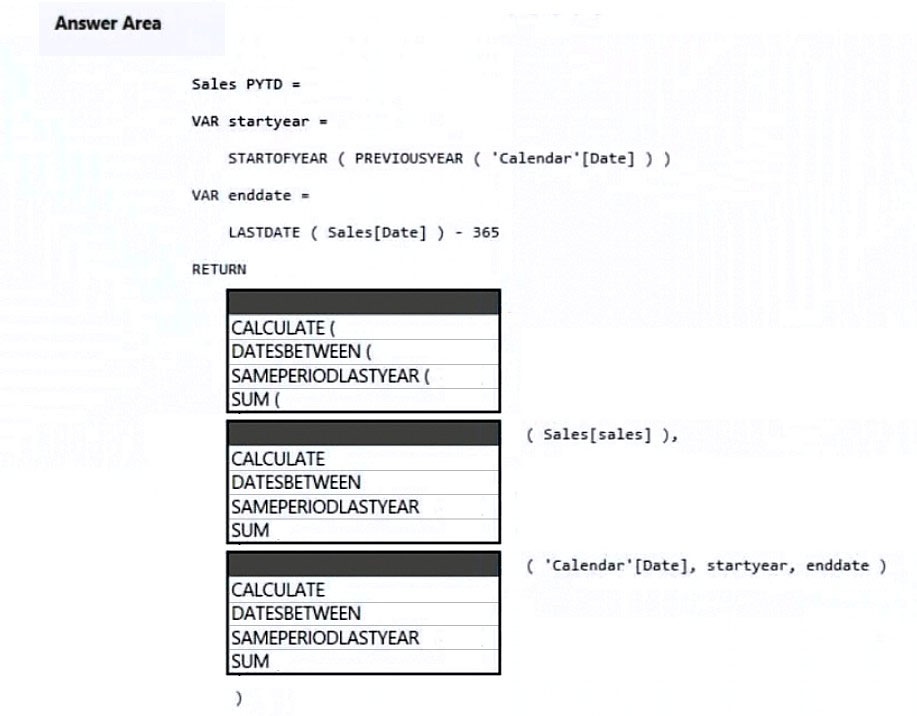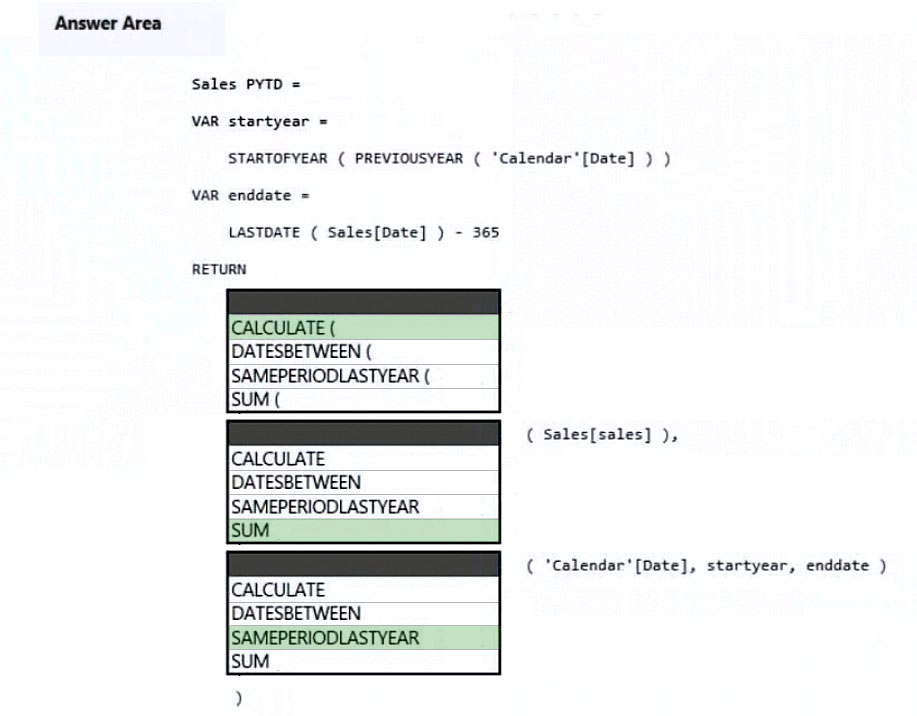

HOTSPOT -
You are enhancing a Power BI model that has DAX calculations.
You need to create a measure that returns the year-to-date total sales from the same date of the previous calendar year.
Which DAX functions should you use? To answer, select the appropriate options in the answer area.
NOTE: Each correct selection is worth one point.
Hot Area:

Muffinshow
Highly Voted 2 years, 4 months agoalena2k
Highly Voted 2 years, 4 months agoRichardOgoma
2 years, 3 months agoGiuseppeTanda
Most Recent 1 month, 2 weeks agojaume
1 month, 3 weeks agorcaliandro
4 months, 4 weeks agoacvribeiro
1 year, 2 months agoElfmo11
1 year, 4 months agoIgetmyrole
1 year, 4 months agoMabuse1
1 year, 6 months agoarnoh
1 year, 6 months agotke44
1 year, 7 months agoahhida
1 year, 8 months agoRazaTheLegend
1 year, 9 months agoSanaCanada
1 year, 9 months agoSanaCanada
1 year, 10 months agoBurabari
1 year, 8 months agoPinha
1 year, 10 months agoMati_123
1 year, 10 months ago